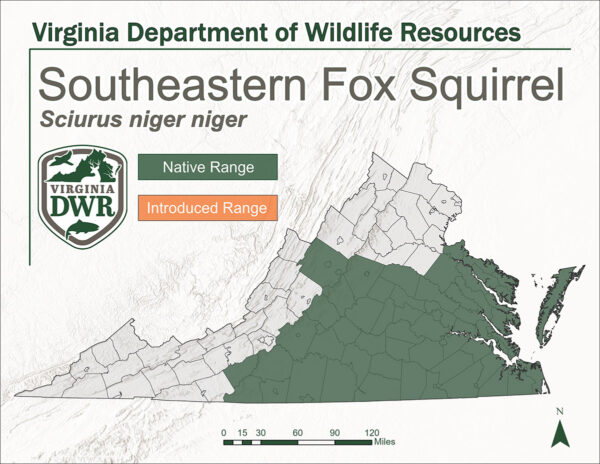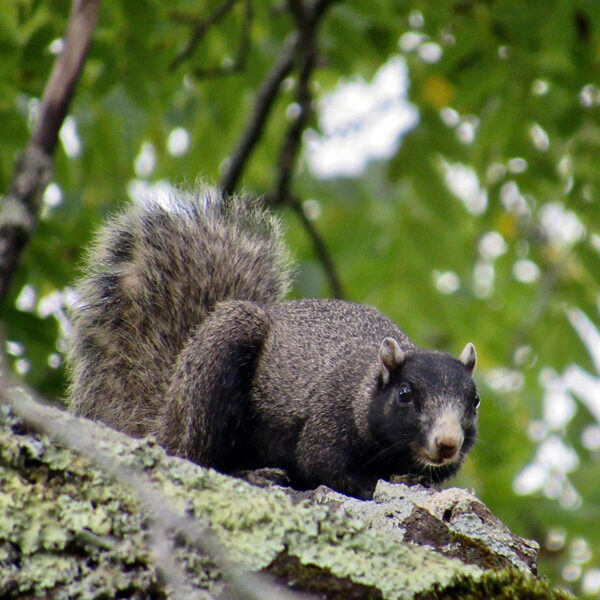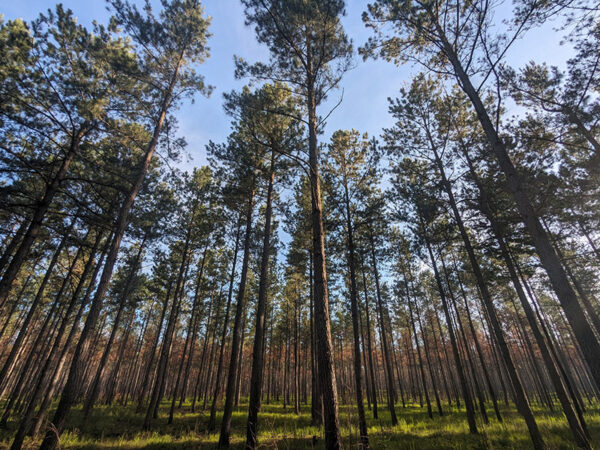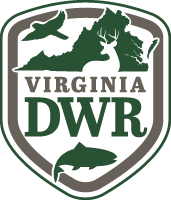A Southeastern Fox Squirrel sits in a large tree. Photo by ©Donna Raadt
A Southeastern Fox Squirrel in a residential setting. Photo by ©Aaron Mazuel
Fact File
Scientific Name: Sciurus niger niger
Classification: Mammalia, Order Rodentia, Family Sciuridae
Conservation Status:
- Species of Greatest Conservation Need-Tier 3a on the Virginia Wildlife Action Plan
Size: 20-26 inches in total length and can weigh up to 3 pounds
Life Span: Average 6 years but up to 10 years
Distribution
The Southeastern Fox Squirrel (Sciurus niger niger) is one of four subspecies of Fox Squirrel occurring in Virginia. It is most often found in the southeast portion of the state, but has been occasionally spotted in other locations.

Identifying Characteristics

Photo by ©Donna Raadt
- The largest squirrel in Virginia
- 3 possible color phases: gray, tan, and black
- White ears and white nose
- Black on top of the head
Habitat
The Southeastern Fox Squirrel requires mature pine and mixed pine forests. They prefer longleaf pines, and will typically choose a large, lone tree with a cavity for nesting. Ground cover is typically grassy with a sparse understory, and relatively low plant diversity.

An expansive pine stand on Big Woods Wildlife Management Area. Photo by ©Ashlei Selden – DWR
Diet
The Southeastern Fox Squirrel consumes herbaceous and woody plant parts such as pine cones, fruits, sap, roots, and tubers. They have also been known to opportunistically eat bird eggs, nestlings, and even adult birds. Like other squirrels, the Southeastern Fox Squirrel stores food such as acorns in ground caches within their home range. Due to their large size, they are less agile in tree tops than other squirrel species, and tend to forage on the ground.
Reproduction
Nesting activity can occur in the Summer and Fall, most often taking place in May, June, September and October. Females can have one or two litters, each consisting of one to six young. Leaf nests are preferred in the summer, while tree cavities are more often used in the fall going into winter.
Last updated: August 13, 2025
The Virginia Department of Wildlife Resources Species Profile Database serves as a repository of information for Virginia’s fish and wildlife species. The database is managed and curated by the Wildlife Information and Environmental Services (WIES) program. Species profile data, distribution information, and photography is generated by the Virginia Department of Wildlife Resources, State and Federal agencies, Collection Permittees, and other trusted partners. This product is not suitable for legal, engineering, or surveying use. The Virginia Department of Wildlife Resources does not accept responsibility for any missing data, inaccuracies, or other errors which may exist. In accordance with the terms of service for this product, you agree to this disclaimer.

